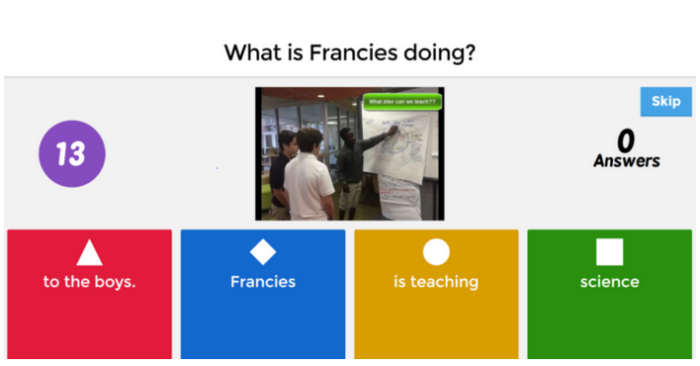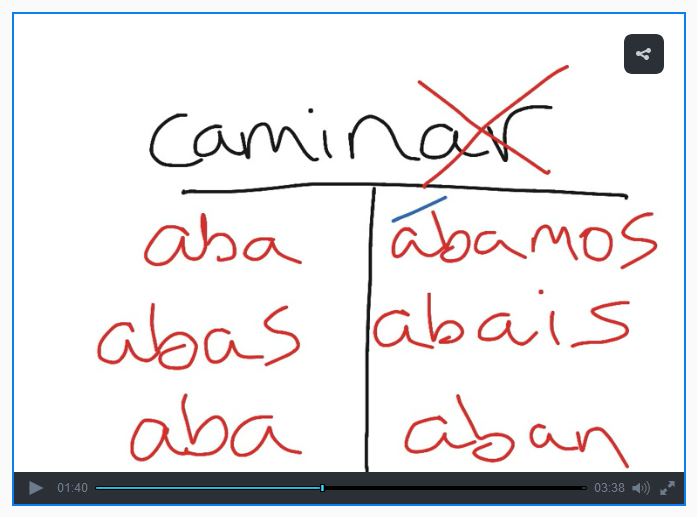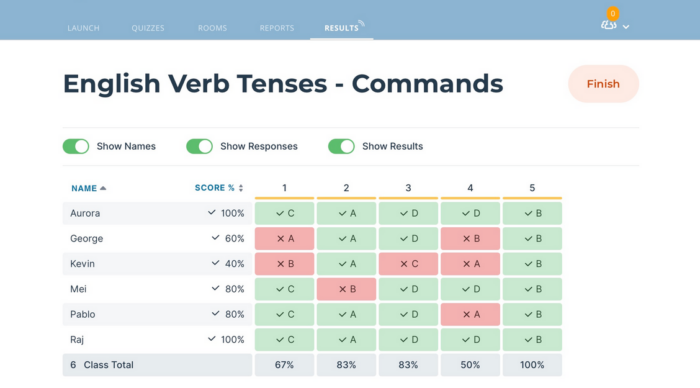Top Apps to Enrich Private Language Learning Lessons
Read other articles:
Back to posts
Table of Contents

“Learn German in minutes”… ” This makes language learning a breeze”…” Take the pain out of language learning”…”All you need to learn Spanish in two weeks”.
We’ve all heard the claims that a flurry of language-learning apps make to encourage people to download their apps.
These claims are highly overblown and the truth is that most of the apps simply digitize the traditional way of learning language (the grammar-translation method). For that reason, they don’t work well on their own.
But that’s not to say that teachers and students of second languages can’t sometimes use these apps or other technology to enrich private lessons or classroom situations. It’s tough to ignore the tech, after all.
Let’s take a look at how you could start incorporating some aspects of language apps and others into your lessons.
Main pros and cons of language learning apps
Language apps do vary in their approaches so it’s a little difficult to be general. However, there are some general pros and cons that we should be aware of before we consider using language apps.
Pros of language apps
- Students have language help with them at all times (on their cellphones)
- They remove the need to physically be in a classroom
- Students are accustomed to (and prefer) using the available technology
- Many apps are free (at least to start with)
- May help with learning vocab (like a pictorial dictionary)
- Low fear of making errors
- No teacher/instruction is necessary
- Students can study at their own pace
- They can make learning more fun (games, quizzes, etc.)
- May provide multi-sensory stimuli to enrich the learning experience
Cons of language apps
- Many apps simply digitalize the ineffective, traditional learning methods
- Most focus on vocab and little else (which is un-engaging)
- Little feedback or explanation when mistakes are made
- No opportunity for students to ask questions
- No interaction with native speakers or culture
- The focus is often on speaking – little on reading/listening/writing
- Lack of context is provided for the language
- No personalization of learning
- Reliant on a student’s motivation/self-discipline to continue learning
- Many distractions when using smartphones — can damage the learning experience

The impact of some of the drawbacks of language apps can be reduced by having a language teacher facilitate lessons. For instance, a teacher can explain when a grammatical mistake is made and correct the student so that the same mistake is not repeated. Or if the student needs to confirm his/her understanding of the use of an idiom, the teacher is there for instant feedback.
A teacher can also personalize the language learning experience and help motivate students to make up for many of the shortfalls of language apps in this regard. They can also use other everyday technology/apps to enrich the language-learning experience — even if they’re not specifically intended for language students.
Indeed, teachers that don’t use the available technology could be left behind as students demand more engaging ways to learn. So, with the limitations of language apps in mind, let’s take a look at how the available tech can be used in foreign language lessons…
Top apps for language teachers to use
Here are a few ideas for using the latest available tech in private language learning lessons or classrooms…
LangMagic
This is a simple and free Chrome extension that combines AI and human-based learning to translate video material from YouTube, Netflix, etc.
Watching videos in the target language is one of the most natural “language acquisition” methods available to teachers, short of actually being immersed fully in the language with native speakers.
Through video, language learners can choose motivating and engaging topics that are personalized to their interests. They can listen to and mimic the language they hear in context and with visual as well as aural cues This can accelerate learning and improve fluency.
This method of learning is particularly effective for those targeting near-native proficiency, once they have a good command of the basics. It helps students build confidence. Teachers can facilitate the app’s use in private lessons with targeted videos to teach specific points of language or the student can study independently — for instance, by watching a favorite movie or a documentary on a chosen topic in the target language.

Kahoot!
If you want to add some gamification to lessons to brighten them up, consider Kahoot!
It’s not specifically designed for language learning but can help you transform the classroom into a game session, which may help to stimulate engagement. You can create gamified tests and knowledge games for teams of students.

Duolingo
Duolingo is one of the most popular language-learning apps on the market, predominantly used by learners independently of a teacher.
However, it can also be used by teachers in classes containing students of varying levels as the more advanced learners can attempt the more difficult levels — like with a video game. This can help students remain motivated and add variety to lessons.
Lessons integrate conversation, vocabulary, speaking and listening skills, with tests to identify progress and flag where improvement is required. However, used in isolation, Duolingo is unlikely to produce great results for students looking for a good degree of fluency.

Show Me
As mentioned already, learning is generally more effective when visual cues are provided as well as verbal cues — and also if the instruction is in the target language.
Show Me is a virtual whiteboard app that helps teachers do that by allowing you to draw and add text/shapes to communicate meaning (e.g., of vocab or grammar points).
You can even record a video of whatever you’re drawing and include your voice as a narrator. Students can learn in real time or watch the video later.

Google Classroom
Let’s not forget the simple mobile and web apps that people use every day. Some of these can be used by teachers in the classroom to facilitate the language-learning process. Google Classroom, for instance, helped a lot of teachers during the pandemic and remains a user-friendly and intuitive tool for distance learning. In Googe’s words, it helps to “manage, measure and enrich learning experiences”.
Google Classroom can help you plan classes, distribute tasks and assess assignments efficiently. It can be especially useful if your students are frequent users of other Google G-Suite apps (Gmail, Google Drive, etc.)
Socrative
For assessing students, teachers may like to consider Socrative. It describes itself as a “classroom app for fun, effective engagement and on-the-fly assessments”.
You can use the Socrative app to formulate quizzes or submit quick questions to your students and to grade/assess their performance. This provides valuable feedback to your students and the reports generated can be archived and downloaded or sent to students by email.

Babbel
Babbel is another language-learning app, specifically designed for students learning a foreign language.
It has a minimalist layout and each lesson lasts around 15 minutes — so it would be easy to incorporate into an hour-long language lesson along with other learning resources based on the target language.
Lessons are vocab-heavy and generally based on the simple grammar-translation method, with variations of the word or phrase, pictures and optional audio. With additional materials, the app may be useful for language teachers.

So, should you use apps when teaching languages?
The obvious limitations of language learning apps should not be a reason never to use them — or the other available technology. Many learners love using the tech so it’s unrealistic to simply cast language learning apps aside dismissively.
Instead, we need to be aware of their constraints and not rely solely on them for language teaching and learning — because the way that most approach learning is, on its own, quite ineffective.
Much, of course, depends on your intentions as a language teacher or student. If the main goal is to prepare students for a two-week holiday in Spain, some conversational Spanish can easily be picked up using these apps. If, however, students are hoping to reach a language proficiency that is near native speaker level, the apps alone are unlikely to help much.
Becoming fluent in a language requires more exposure to the native language in a variety of contexts, more immersion, more listening and reading – more compelling and comprehensible input. This is the way that language is most effectively acquired — like a child learns to absorb a language.
Don’t forget, you can download our free Chrome extension to start incorporating video learning to help your language students gain fluency.
Read other articles:
Back to posts
